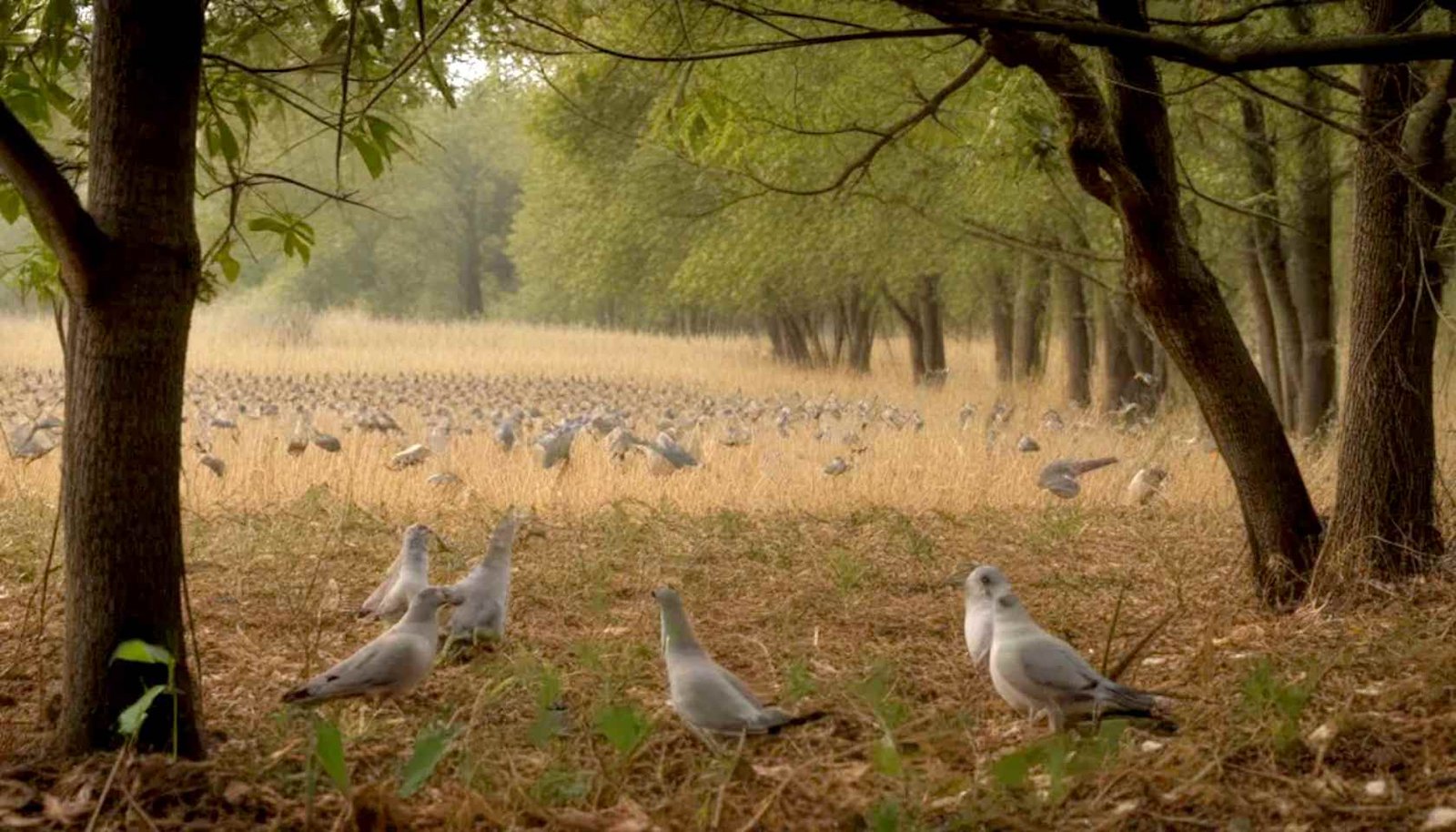Calling all Hoosier hunters! Ready to spread your wings (metaphorically speaking) and join in on Indiana’s thrilling dove season? This guide arms you with all the key details to understand the rules, get a license, and uncover prime hunting spots for a fruitful dove hunting journey in 2024.
When can you shoot doves in Indiana?
The Indiana Department of Natural Resources (IDNR) establishes mourning dove hunting seasons each year. Here’s a breakdown for this :
- Early September Season: Typically runs for three days around Labor Day weekend. The exact dates may vary slightly year-to-year.
- Late September Season: The main dove schedule in Indiana follows the early season, offering a more extended period for hunters to pursue these birds. This season usually lasts for several weeks in late September and early October. (September 1 – October 15)
- Late Season: November 1-26 & December 16 – January 3
Important Note: Seasons can be subject to change, so it’s crucial to consult the official IDNR hunting regulations for the most up-to-date information before heading out. You can find them on the IDNR website.
What are the rules for dove hunting in Illinois
Understanding and following hunting regulations is paramount for a responsible and legal game experience. Here are some key Indiana dove regulations to keep in mind:
- Shooting Hours: It is only permitted from sunrise to sunset.
- Daily Bag and Possession Limits: The daily bag limit for mourning doves is 15, with a possession limit of 45 birds.
- Legal Hunting Methods: Shotguns are the only legal firearm for dove game in Indiana. Shotguns must not be larger than 10 gauge, and only shot sizes #7 or #8 are allowed.
- Plugged Shotguns: When transporting shotguns in a vehicle, they must be unloaded and plugged.
- Hunter Hunter Orange Requirement: While not mandatory for dove pursuits specifically, wearing hunter orange during hunting hours is recommended for increased visibility and safety in the field.
- Migratory Bird Hunting Stamp: Mourning doves are considered migratory birds. All hunters 16 years of age or older must possess a valid Federal Duck Stamp in addition to their state hunting licenses.
Remember: These are just some of the essential regulations. It’s your responsibility to be familiar with all Indiana hunting regulations before participating in any hunting activity.
What license do I need to hunt doves in Indiana?
To legally hunt doves in Indiana, you’ll need to obtain the appropriate licenses. Here’s a breakdown of the typical license costs (subject to change, so verify with the IDNR for current pricing):
- Resident Hunting License: $15.50
- Non-Resident Hunting License: $63.50
- Habitat Stamp: $15.00 (required for all hunters)
- Federal Duck Stamp: $25.00 (required for hunters 16 years of age or older)
Licenses can be purchased online through the Indiana DNR website or at authorized license vendors across the state.
Indiana Doves: Top Spots to Take Aim (and Your Camera)
While success hinges on scouting and hunting strategies, location plays a crucial role. Here are some popular dove seeking destinations in Indiana, categorized by region:
Northern Indiana
The agricultural regions of northern Indiana, particularly areas with corn and soybean fields, are prime dove hunting grounds. Public hunting opportunities exist in places like Willow Slough Fish and Wildlife Area (Lake County) and Kankakee River State Fish and Wildlife Area (LaPorte County).
- Lake Michigan State Park: This sprawling park offers diverse habitats, including agricultural fields that attract doves.
- Kankakee Fish and Wildlife Area: Located in Starke County, this public hunting area provides ample opportunities for dove.
- Willow Slough Fish and Wildlife Area: Situated in LaPorte County, this popular public hunting area offers dove opportunities amidst a variety of habitats.
Central Indiana
West-central Indiana offers a mix of farmland and woodlands, creating attractive dove habitat. Public hunting options include Winamac Fish and Wildlife Area (Pulaski County) and Pine Creek State Fish and Wildlife Area (Montgomery County).
- White River Fish and Wildlife Area: This expansive public hunting area near Indianapolis provides diverse habitats for doves.
- Salamonie State Park: Located in Wabash County, this scenic park offers dove opportunities alongside beautiful natural landscapes.
- Mississinewa State Fish and Wildlife Area: This public hunting area in Miami County provides a mix of habitats suitable for dove scouting.
Southern Indiana
The southeastern counties, with their mosaic of farmland, forests, and wetlands, provide diverse dove game opportunities. Public hunting areas like Pigeon Roost State Wildlife Area (Clark County) and Muscatatuck State Park (Jennings County) are worth exploring.
- Pigeon Roost State Park (continued): This unique park in Orange County is known for its historical significance as a roosting site for millions of passenger pigeons (now extinct). While mourning doves are not as abundant, the park still offers some opportunities.
- Huntington Lake State Park: Located in Wabash County, this park offers dove possibilities alongside recreational activities like boating and fishing.
- Patoka River National Wildlife Refuge: This vast refuge provides excellent dove prospects with diverse habitats and managed fields.
Southeast Indiana
The southwestern part of the state, with its abundant agricultural fields and scattered woodlots, attracts doves throughout the season. Public hunting opportunities can be found at White River Fish and Wildlife Area (Greene County) and Glendale Fish and Wildlife Area (Daviess County).
- Choosing and Training the Perfect Dove Hunting Dogs - June 17, 2024
- Mourning Doves Texas: 2024 Early Fall Season for Hunting - June 14, 2024
- Gear Up and Go Dove Hunting in Illinois: Exploring The Season - June 13, 2024

